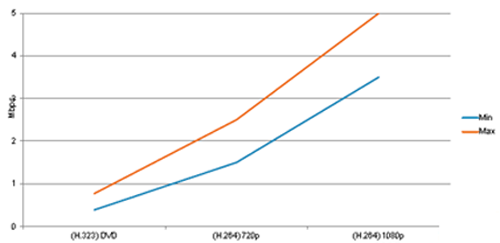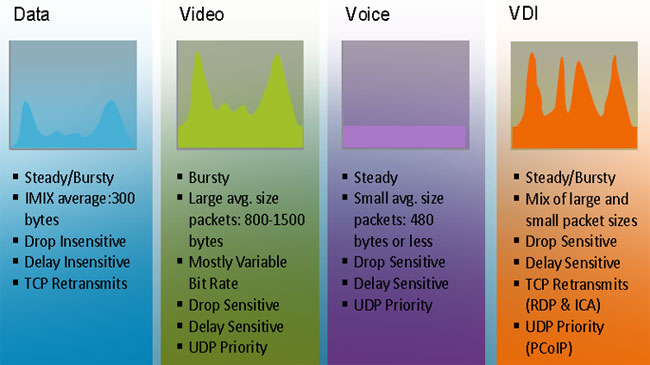Accurately monitoring your organization’s business application performance, service provider SLA breaches, network infrastructure traffic, bandwidth availability, Wi-Fi capacity, packet loss, delay, jitter and other important metrics throughout the network is a big challenge for IT Departments and IT Managers. Generating meaningful reports for management with the ability to focus on specific metrics or details can make it an impossible task without the right Network Management System.
The continuous demand for businesses network infrastructure to support, uninterrupted, more applications, protocols and services has placed IT departments, IT Managers and, subsequently, the infrastructure they manage, under tremendous pressure. Knowing when the infrastructure is reaching its capacity and planning ahead for necessary upgrades is a safe strategy most IT Departments try to follow.
The statistics provided by the Cisco Visual Networking (CVN) Index Forecast predict an exponential growth in bandwidth requirements the coming 5 years:

These types of reports, along with the exponential growth of bandwidth & speed requirements for companies of all sizes, raises a few important questions for IT Managers, Network Administrators and Engineers:
- Is your network ready to accommodate near-future demanding bandwidth requirements?
- Is your current LAN infrastructure, WAN and Internet bandwidth sufficient to efficiently deliver business-critical applications, services and new technologies such as IoT, Wi-Fi - 802.11n and HD Video?
- Do you really receive the bandwidth and SLA that you have signed for with your internet service provider or are the links underutilized and you are paying for expensive bandwidth that you don’t need?
- Do you have the tools to monitor network conditions prior to potential issues becoming serious problems that impact your business?
All these questions and many more are discussed in this article aiming to help businesses and IT staff understand the requirements and impact of these technologies on the organization’s network and security infrastructure.
We show solutions that can be used to help obtain important metrics, monitor and uncover bottlenecks, SLA breaches, security events and other critical information.
Let’s take a quick look at the topics covered in our article:
- Network Performance Metrics and their Bandwidth Impact
- New Applications and Bandwidth Requirements
- High Definition (HD) Video Bandwidth Requirements
- BYOD and 802.11n Bandwidth Requirements
- Virtual Desktop Infrastructure (VDI) Bandwidth Requirements
- Cloud IP Traffic Statistics
- Application Bandwidth Requirements and Traffic Patterns
- Network Monitoring Systems for Bandwidth & Metric Monitoring
- ManageEngine OpManager12 NMS features
- Bandwidth Monitoring
- Router Traffic Monitoring
- Cisco AVC Monitoring
- Advanced Security Analytics
- Cisco IPSLA Monitoring
- Cisco NBAR Reporting
- ManageEngine OpManger12 trial version installation
- Summary
Finally, we must point out that basic knowledge of the Networking and Design concepts is recommended for this article.
Network Performance Metrics and their Bandwidth Impact
Network performance metrics vary from business to business and provide the mechanism by which an organization measures critical success factors.
The most important performance metrics for business networks are as follows:
- Connectivity (one-way)
- Delay (both round-trip and one-way)
- Packet loss (one-way)
- Jitter (one-way) or delay variation
- Service response time
- Measurable SLA metrics
Bandwidth is one of the most critical variables of an IT infrastructure that can have a major impact to all the aforementioned performance metrics. Bandwidth over saturated links can cause poor network performance with high packet loss, excessive delay, and jitter which can result in lost productivity and revenue, and increased operational costs.
New Applications and Bandwidth Requirements
This rapid growth for bandwidth affects the Enterprises and Service Providers which are continually challenged to efficiently deliver business-critical applications and services while running a network at optimum performance. The necessity for more expensive bandwidth solutions is one of the crucial factors that may have a major impact on a network and applications performance. Let’s have a quick look at the new technologies with high bandwidth needs which require careful bandwidth and infrastructure planning:
High Definition (HD) Video Bandwidth Requirements
This surpassed standard definition by the end of 2011. User demand for HD video has a major impact on a network due to the demanding bandwidth requirements as clearly displayed below:

DVD,720p HD and 1080p HD bandwidth requirements:
- (H.264) 720p HD video requires around 2,5 Mbps or twice as much bandwidth as (H.263) DVD
- (H.264) 1080p HD video requires around 5Mbps or twice as much bandwidth as (H.264) 720p
- Ultra HD 4320p video requires around 20Mbps or four times as much bandwidth as (H.264) 1080p
BYOD and 802.11ac Bandwidth Requirements
802.11ac is the next generation of Wi-Fi. It is designed to give enterprises the tools to meet the demands of BYOD access, high bandwidth applications, and the always-on connected user. The 802.11ac IEEE standard allows for theoretical speeds up to 6.9 Gbps in the 5-GHz band, or 11.5 times those of 802.11n!
Taking into consideration the growing trend and adoption of Bring-Your-Own-Device (BYOD) access, it won’t be long until multi-gigabit Wi-Fi speeds will become necessary.
Virtual Desktop Infrastructure (VDI) Bandwidth Requirements
Each desktop delivered over WAN can consume up to 1 Mbps bandwidth and considerably more when employees access streaming video. In companies with many virtual desktops, traffic can quickly exceed existing WAN capacity, noticeably degrading the user experience.
Cloud IP Traffic Statistics
The Annual global cloud IP traffic will reach 14.1 ZB (1.2 ZettaBytes per month) by the end of 2020, up from 3.9 ZB per year (321 ExaBytes per month) in 2015.
Annual global data center IP traffic will reach 15.3 ZB (1.3 ZB per month) by the end of 2020, up from 4.7 ZB per year (390 EB per month) in 2015. These forecasts are provided by the Cisco Global Cloud Index (GCI) which is an ongoing effort to forecast the growth of global data center and cloud-based IP traffic.
Application Bandwidth Requirements and Traffic Patterns
Bandwidth requirements and traffic pattern are not common among various applications and need careful planning as displayed below:

Data, Video, Voice and VDI bandwidth requirements & traffic patterns
An effective strategy is essential in order to monitor network conditions prior to potential issues becoming serious problems. Poor network performance can result in lost productivity, revenue, and increased operational costs. Hence, detailed monitoring and tracking of a network, applications, and users are essential in optimizing network performance.